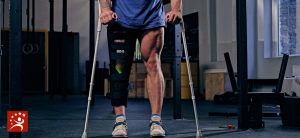Snapping hip, also known as coxa saltans or dancer’s hip, is a condition in which you hear a snapping sound or feel a snapping sensation in your hip when you walk, run, get up from a chair, or swing your leg around. For most people, the condition is little more than an annoyance; the only symptom is the snapping sound or sensation itself. But for dancers or athletes, snapping hip syndrome symptoms may also include pain and weakness that interfere with performance. That is why it is important to see the orthopedic specialists at the Colorado Center of Orthopaedic Excellence in Colorado Springs, Colorado, who are highly experienced in this condition. That way, you are guaranteed a true diagnosis and a proper treatment plan.
Snapping Hip Overview
“Snapping hip syndrome” (SHS) is a medical condition that describes the catching of tendons across the hip joint on the movement of the hip. One can sense something catching or hear a popping sound or click when the joint moves. Some people make an audible click when they bend at the hip. For other people, hip snapping can be seen, and their hip muscles visibly shudder with certain movements. A person with snapping hip syndrome can usually snap a hip at will. He or she can make a hip snap with a particular movement, such as standing up from a seated position, walking, kicking, or rotating a leg out.
About The Hip
The hip is a ball-and-socket joint formed where the rounded end of the thighbone (femur) fits into a cup-shaped socket (acetabulum) in the pelvis. The acetabulum is ringed by strong fibrocartilage called the labrum, which creates a tight seal and helps to provide stability to the joint. Encasing the hip are ligaments that surround the joint and hold it together. Over the ligaments are tendons that attach muscles in the buttocks, thighs, and pelvis to the bones. These muscles control hip movement. Fluid-filled sacs called bursae are located in strategic spots around the hip to provide cushioning and help the muscles move smoothly over the bone.
Variations Of Snapping Hip Syndrome
Snapping hip syndrome isn’t one thing; it’s much more. There are three distinct types, each with its own cause and own set of symptoms:
- Internal: the iliopsoas tendon is snapping over the brim of the pelvic bone.
- External: when the IT band (the large group of fibers that run down the outside of the hip) snaps over the trochanter or the bony, top part of the femur. This is the most common form of SHS and can lead to bursitis, adhesions, and inflammation in the gluteus maximus.
- Intra-articular: occurs when the cartilage is torn or damaged in the hip joint and causes it to lock up.
Who Is At Risk?
While this condition is also called “dancer’s hip”, a variety of athletes can be affected, including gymnasts, short-distance runners, soccer players, rowers, and people who practice martial arts (karate). The typical age range is 15-35 years, although it occurs more frequently in young people who experience growth spurts that can cause extra strain on muscles and tendons. Women are more affected than men, and snapping hip syndrome can also affect people who have had certain hip or knee surgeries, or people who have had a drastic increase in their activity levels in a short period. Other risks include flat feet, improper alignment of the knees, such as bowlegs or knock knees, not warming up properly before an activity, or wearing improperly fitting protective equipment.
Non-Surgical Treatment
The good news is that there are several conservative ways to treat SHS. These include:
- Rest limits joint irritation and allows the affected tendon, muscle, or bursa to heal.
- NSAIDs AND COX-2 inhibitors for a limited time may ease inflammation and hip pain.
- Physical therapy involves stretching, massage, retraining, and increasing an athlete’s physical awareness to modify the hip’s biomechanics.
- Ultrasound-tendon and muscle healing may get a boost from ultrasound
- Steroid injections if pain interferes with daily living.
When Is Surgery Indicated For Snapping Hip?
In the rare instances that a snapping hip does not respond to conservative treatment, your doctor may recommend surgery. The type of surgery will depend on the underlying cause of the snapping hip. Hip arthroscopy is a minimally invasive procedure in which a small camera called an arthroscope is inserted into your hip joint. The displays pictures on a video monitor, and your surgeon uses these images to guide miniature surgical instruments. Hip arthroscopy is most often used to remove or repair fragments of a torn labrum. Traditional open surgery may be required to address the cause of the snapping hip. An open incision can help your surgeon to better see and gain access to the problem in the hip.
Getting The Right Diagnosis
Before any treatment can begin, an accurate diagnosis must be made. The hip is a complex joint located deep within the body, so diagnosing hip problems can be challenging. Before recommending treatment, your doctor needs to determine the exact cause of your snapping hip. They will closely examine your medical history, evaluate your symptoms and perform a physical examination. Your doctor may also order X-rays or an MRI to help rule out other hip disorders, including hip arthritis, hip joint synovitis (inflammation in the hip joint membrane lining, and even tumors. The good news is that snapping hip syndrome is usually harmless. While it can seem to be merely annoying, that doesn’t mean there isn’t damage occurring, such as a condition called bursitis. This means you need experts like those at CCOE in Colorado Springs, Colorado, who are trained in diagnosing snapping hip syndrome and developing a unique treatment plan that will let you get back to all the things you love to do.








